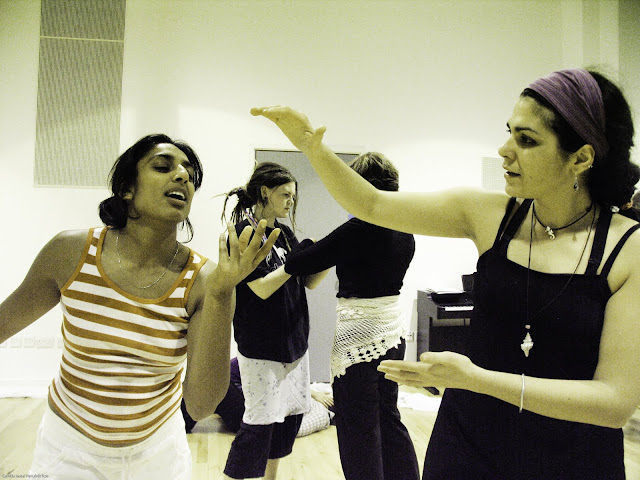Movement and Body Language
Movement in the Sesame Approach

‘The body doesn’t lie. Everything begins with and from the body. The mind and the body do not function separately – they are intimately linked as an organic whole.’ (Helen Ridlington White)
Laban described human movement in terms of four qualities and observed the unique workings of each of these in human beings. He worked from the premise that the way a person moved represented what was going on unconsciously in their inner world. Like Jung, he proposed that when you extend or balance the vocabulary of one, the other likewise shifted and transformed so expanding and enriching the experience of the individual. Laban’s theories can be viewed in three parts: what moves; how do we move and where do we move?
What Moves? This might be the whole body, creating different shapes, stretching, twisting and the like. It could, however, be parts of the body, limbs or the upper half or lower half.
How do we move? Laban identified the four movement qualities as being: Flow, Weight, Space, and Time. He observed the outer use of these four elements and used them as tools to work with the inner world.
Flow is linked to feeling - it can be free or bound. Free flow moves endlessly on and on and can be difficult to end. Bound flow starts and stops, it has a pizzicato feel to it and is much less spontaneous and more rigid.
Weight is linked to intention - it can be firm or fine. The energy or force which is used to do things may relate to firm or fine purpose.
Space is linked to thinking or attention - it can be direct or indirect and relates to the way a person inhabits and learns about the world.
Time is linked to decision-making - it can be sudden or sustained and relates to the speed at which choices are made.
Where do we move? Here we are considering the awareness of the moving body in the environment of the space around us and identifying our own moving body. Are we moving in our own personal space or in a wider arena, general space.
Experiential creative movement explores these qualities, leading towards extending a movement vocabulary, giving insight and awareness of others through movement.
Click here for Movement Case Study
